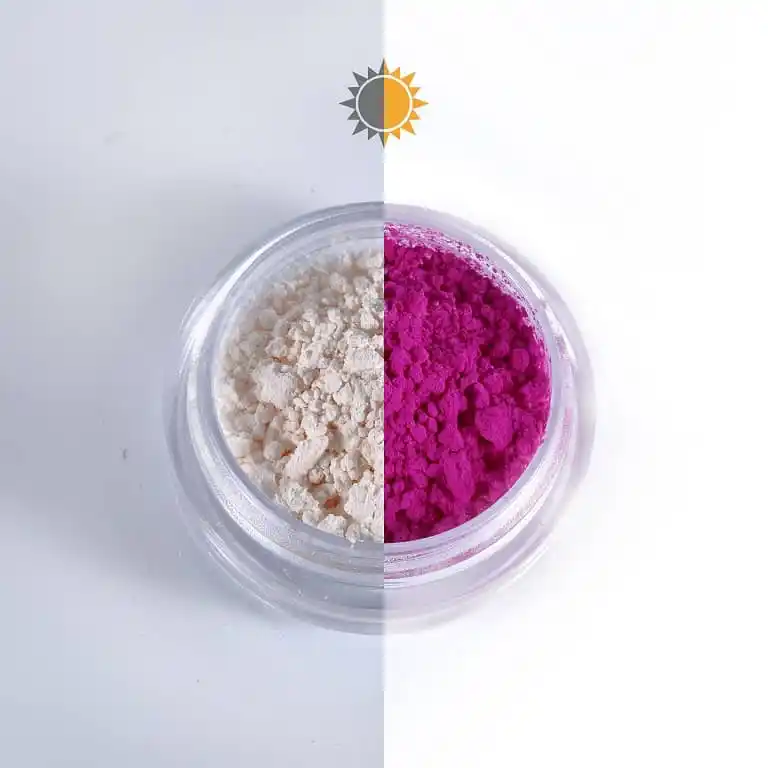Photochromic pigments color change principle
April 8th, 2024Photochromic pigments are a special type of pigment whose color changing principle is based on the chemical structure of photosensitive molecules and the action of light. After irradiated by sunlight/ultraviolet rays, it can absorb the energy of sunlight/ultraviolet rays and produce the change of molecular structure, which leads to the change of absorbing wavelength and the change of color; when it loses the energy of sunlight/ultraviolet rays, it will return to the original molecular structure and revert to the original color.
1. Photosensitive molecular structure: Photosensitive molecules in Photochromic pigments are usually organic compounds that contain specific functional groups. These molecules have two or more different structural forms and can undergo reversible structural changes when irradiated with light of a specific wavelength range.
2. Activation and deactivation: When photosensitive molecules are in their initial state, they may exhibit a color, usually colorless or a specific color. When irradiated with light of a specific wavelength range (usually ultraviolet or visible light), these molecules undergo a structural change that results in a color change. This process is called “activation”. When the light source stops irradiating or the light source changes, the molecules gradually return to their initial state, a process known as “elimination.
3. Energy level jumps: Structural changes in photosensitive molecules usually involve energy level jumps of electrons within the molecule. Exposure to light excites the electrons in the molecule to jump to a higher energy level, which changes the structure of the molecule and results in a color change. When the light source is stopped, these electrons return to their original state and the molecule reverts to its original structure.
4. Rate of reaction: The rate of color change in Photochromic pigments usually depends on the intensity and wavelength of the light, as well as the chemical structure of the photosensitive molecule. Some molecules are more sensitive to specific wavelengths of light and therefore achieve faster color changes.

Commonly used colors include: violet, blue, yellow, red, etc. Photochromic powders can be used in many applications such as eyeglasses, textiles, safety signs, artwork, toys, etc., and the dosage can be adjusted according to the requirement of color shades.
If you are interested in photochromic powder or have any questions, please feel free to contact us at [email protected], Kolortek, your whole process of intimate purchasing consultant.
